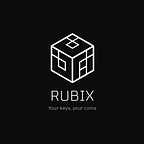Benefits in Cross border payments using Blockchain
Blockchain, the technology behind cryptocurrencies such as Bitcoin and Ethereum has been disrupting all industries from finance to manufacturing and more recently, cross-border payments. Blockchain technology is a highly secure, fast, and cost-efficient way to send payments across borders. Blockchain transactions are recorded on a public ledger that cannot be tampered with or altered by any individual. These qualities make Blockchain the perfect solution for cross-border payments. Here are some of the benefits of using blockchain for facilitating cross-border payments.
1. Greater Transparency
One of the biggest benefits of blockchains in cross-border payments is transparency. The blockchain is a distributed ledger, meaning that there isn’t one central database of information. There are many copies which makes it virtually impossible to alter records without detection by others. It also eliminates the need for any middlemen, central agencies, or correspondents from the payment processing. This shared record represents the blockchain and ensures greater transparency for cross-border transactions.
2. Cost Savings
Cross-border payments are usually expensive because banks that carry out the transactions often do not have a direct relationship with one another and require intermediary banks to facilitate an indirect payment transfer. These intermediaries charge a significant fee that is deducted from the total transfer amount. This intermediary fee is in addition to the fee charged by the beneficiary or the remitter. Blockchain eliminates the need for intermediaries, dramatically reducing the charges associated with cross-border payments. Another crucial benefit of cross-border payments using blockchain is reduced cost with minimal charges along the payment chain.
3. Faster Transactions
In a regular cross-border payment, the time it takes to complete a transaction can range from two to five business days mainly due to the time zone differences between the two countries involved. With blockchain, since there is no need for central agencies and the movement of messages, there is reduced turnaround time for payment settlements. In fact, blockchain payments are completed in close to real-time. This way businesses and individuals need not wait for funding to come through and enjoy almost immediate transactions using blockchain.
4. Enhanced Security
Traditionally payment records and other details are kept by one central authority, like a bank, and are highly vulnerable to breaches. Damage to the central authority results in compromise of users’ data. With blockchain, all transaction records are secured by cryptography, tied to previous transactions, and distributed among participants in a ledger. So, if someone wants to tamper with data, they would have to alter all the earlier transactions. This makes it extremely difficult to compromise the data. Blockchain also requires a consensus of nodes to agree upon the state of the ledger for it to be valid. So, it is nearly impossible to modify the details of transactions and other data in it. Using blockchain technology, parties involved in cross-border payment can also benefit from reduced risk via blockchain settlement and clearing features.
As enterprises are gearing up for the crypto future, Blockchain technology provides an innovative solution to cross-border payments, where it can reduce friction by providing faster processing times and more transparency into transaction costs. Thus, the future of blockchain technology is highly optimistic for cross-border payments as both the consumers and banks are proactive in adopting the technology. At Rubix Network, we are the proud inventors of PoH (Proof of Harvest) Consensus, a carbon-neutral blockchain mechanism. Our proofchain protocol scales with asynchronous parallelism to facilitate real-world decentralized applications.
